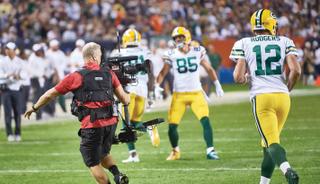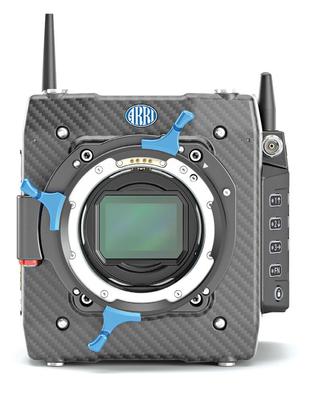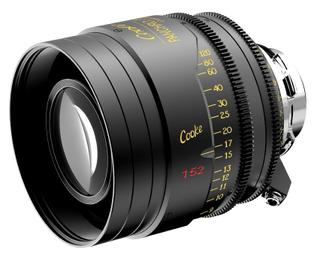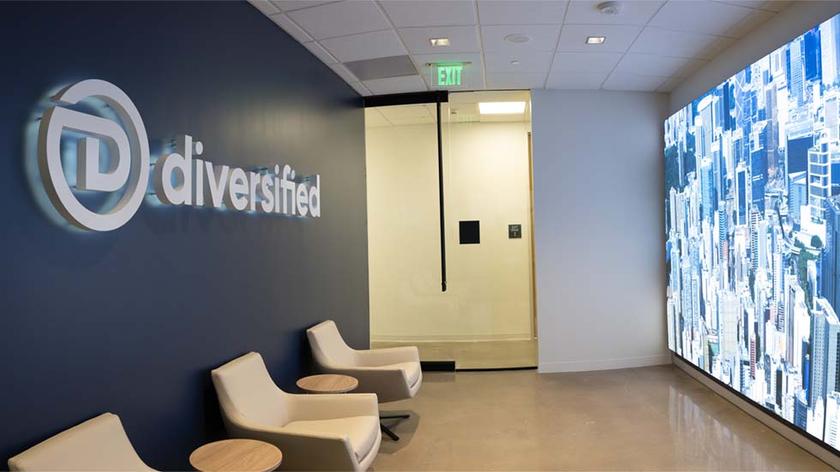Lenses Respond to Higher Image Qualities
ALEXANDRIA, Va.—Television and motion picture lens makers have found themselves challenged to develop and manufacture lenses that hold up to increasing resolutions of 4K and beyond. To achieve this, they’ve invented and applied new technologies that have been years in the making.
HIGH PRECISION OPTICS
Citing Thales Angenieux’s 70 years of building prime lenses, the company’s North American Sales Manager Nick Hayes said their new Optimo Primes “are the result of decades of proven experience and know-how in high precision optics and mechanics.”

The Optimo Prime series of 12 lenses provides full-frame 46.5mm image circle coverage with a consistent 1.8 T-stop except on the extremes. They are available as PL and LPL mount, and designed as smart lenses. The Optimo Prime series is very compact and lightweight, and they offer a common gear size and position for all lenses in the 12-lens set.
“Based on cinematographer feedback, Optimo Primes will provide both Cooke-I and LDS metadata,” said Hayes. Other user features include a replaceable iris blade unit, user-configurable for bokeh including anamorphic effect, a replaceable internal glass element to customize optical properties, a 320-degree focus rotation angle and the possibility to go beyond infinity and close focus.
He noted the full-frame Optimo Prime series is a perfect match with the Optimo Ultra 12X, Angenieux’s new long-range zoom.
BREAKING FREE
“ARRI’s new Signature Prime lenses take advantage of significant recent advancements in optical design, optical materials and coatings and optical machinery,” said Art Adams, ARRI cinema lens specialist. “But the real advancement has been a willingness to break free of our own legacy lens mount.”

The 30-year-old PL lens mount was developed by ARRI for 35mm film and had to make room between the lens and the camera for a spinning mirror, part of the viewfinder system. The new, larger LPL mount “should result in better, cheaper lens designs and greater lens portability between cameras.”
“The LPL lens mount is wider to allow for the free interchange of lenses between large format and S35 sensor cameras,” said Adams. “This additional width also allows for near-telecentric optical designs, where light strikes the sensor at an angle as close to perpendicular as possible. To do this, the lens mount must be as big as the sensor. Near-telecentricity eliminates a number of artifacts related to sensor design, such as increased chromatic and spherical aberration, edge shading and color-crossover effects. ARRI Signature Primes are the only near-telecentric multiformat lenses in the world, and as such we believe they will work optimally with any foreseeable future sensor designs.”
PUSHING THE ENVELOPE
Canon has just introduced a top-of-the-line portable 4K UHD lens, the very wide angle zoom UHD XF. “4K’s tough in 2/3 inch,” said Larry Thorpe, Canon USA’s national marketing executive. “You’re dealing with 200 line pairs per millimeter, it’s really pushing things.”
“We’ve been pretty good at wide angle for some years now. But with this one we wanted to extend the telephoto, and that was responding to pleas of various people. A lot of people in sports, when they’re shooting in smaller venues—like a basketball court, wrestling, boxing, even tennis—they love the wide angle. But they also want more telephoto. This lens gives them both.”
Not all customers are ready for 4K today, but can appreciate 1080 60p and HDR performance. “One of the problems with HDR and wide color gamut is that even a small amount of chromatic aberration becomes more visible. So when you make an HDR wide color gamut lens, you’ve just got to grind down those aberrations even more. And to do that, we use a multigroup for the zoom. Typically, portable lenses have two zoom groups to perform the zooming operation. In this lens we use three groups, and that way we get more degrees of freedom to control the aberrations and elevate the resolution.”
THE ‘COOKE LOOK’
Cooke Optics pioneered a number of lens developments over its more than a century of lens design and manufacturing. In its current lenses, it is replicating what it calls the Cooke Look, described as warm and natural images on the screen.
“We noticed when digital cinematography came in, not to talk bad about digital, but some people think of it as a boring format,” said Les Zellan, Cooke chairman. “Cinematographers were desperate to find a way to put character and life into the digital, and one of the ways they did that was by using the old lenses.”

One Cooke lens in particular, the Speed Panchro lenses, looked promising to fill that bill, even though Cooke hadn’t made one in 55 years. “We thought ‘why don’t we bring them up to the modern world mechanically?’ A lot of those old glasses weren’t available anymore, so we had to substitute, using that old look as a target. We’ve added things like the linear iris and the Cooke focusing scale. But the actual look that comes out of the back of the lens is a dead ringer for the Speed Panchro.”
BRAND NEW DESIGN
Over the past couple of years, Fujifilm has replicated 15 of its HD lenses to 4K Ultra High Definition with HDR capabilities. Two new focal length 46-times zooms are the wide angle UA46x9.5 and the more telephoto UA46x13.5.
“They’re all digital, all new stabilization system,” said Gordon Tubbs, vice president at Fujifilm North America Corporation, Optical Device Division. “We didn’t just build a new 4K lens and put an existing drive unit in it. Literally the whole lens is a brand new design in both cases.” There are two specialized versions of each of the zooms. One eliminates stabilization for applications such as aerial photography where stabilization is already provided. The other provides motorized remote control of the 2x extender, which is necessary for robotic operations.
Tubbs explained the 4K lenses in Fujifilm’s lineup are only marginally more expensive than the HD models they replace. “During the transition from SD to HD we learned a lot about manufacturing and tight tolerances as we went from one technology to the next. And of course there are advancements in glass and coatings.” The company has developed its HTEBC process, High Transmittance Electronic Beam Coatings.
“And now we’re making the same steps into 8K.”
CLOSER TO HUMAN EYESIGHT
A year ago, Zeiss introduced the first of its Supreme Prime line of lenses, and is continuing to add focal lengths a step wider and a step more telephoto to the first lenses released. The Supremes can handle both full frame and Super 35. “It’s being used in both sets of formats,” said Snehal Patel, Zeiss director of cinema sales for the Americas. “It works with the latest crop of digital cameras, like the Alexa LS, RED Monstro, Sony Venus and the C700 FF from Canon.”
He noted, “The Supremes are priced between the cost of a Zeiss Ultra Prime and a Master Prime. So economically it makes a lot of sense, especially in the rental environment, where the lenses will be used for a very long time.
“You’re going to see more and more demand coming because the cameras are available and the full frame format is so interesting with the wider angle of view, which is closer to human eyesight. And also the fact that you get this smaller grain structure from this sensor size, because you’re using pixels that are about the same size as the Super 35 sensors, except that when projected those pixels look smaller on screen.”
Get the TV Tech Newsletter
The professional video industry's #1 source for news, trends and product and tech information. Sign up below.













